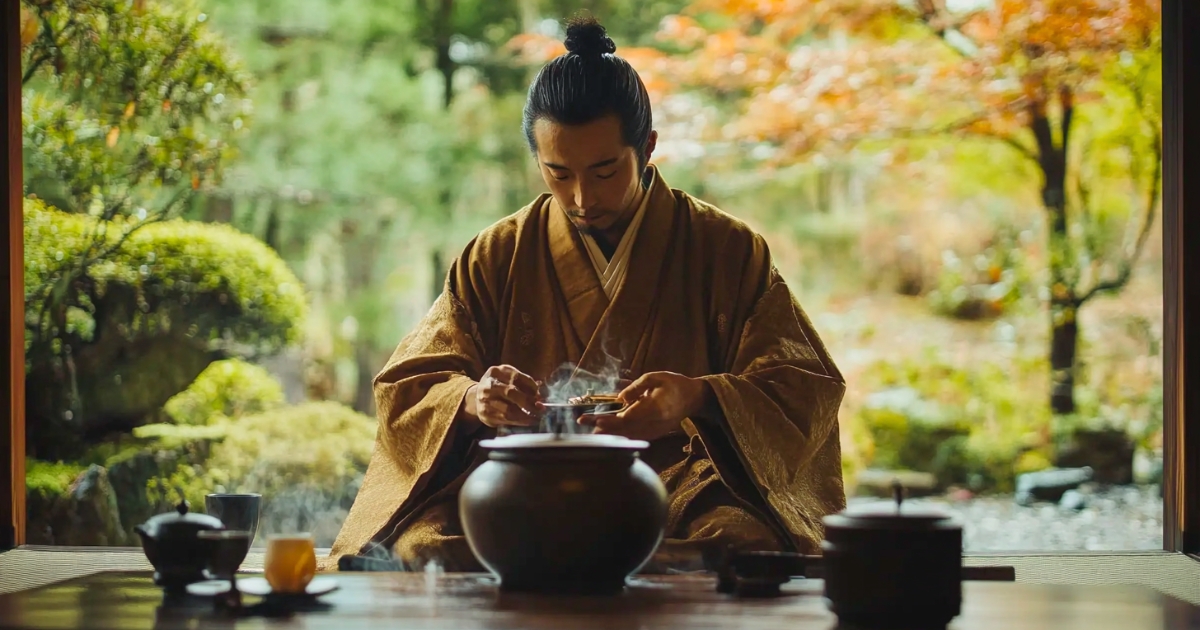When we hear the name Oda Nobunaga, the powerful warlord of Japan’s Sengoku period, many of us imagine an innovative military leader who sought to unify Japan under the banner of “Tenka Fubu” (All the world by force of arms), utilizing firearms in his conquests. However, Nobunaga had a surprisingly refined and delicate side: he was a lover of the tea ceremony, elevating this cultural practice to the level of policy.
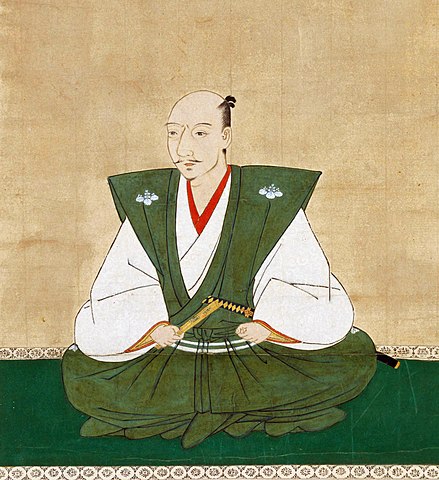
A portrait of Oda Nobunaga, believed to be painted by the Kano school. His dignified expression reveals a glimpse of his refinement as a man of culture. This portrait skillfully captures Nobunaga’s multifaceted character. By Kanō Sōshū (1551 – 1601)
Nobunaga’s Encounter with Tea
Oda Nobunaga’s encounter with the tea ceremony occurred in his youth. Born and raised in Owari Province (present-day western Aichi Prefecture), an area renowned for tea production and with a long-established tea culture, Nobunaga was exposed to this tradition from an early age. The Oda clan, which ruled Owari, had a history of practicing the tea ceremony, and Nobunaga’s father, Nobuhide, was known as a tea enthusiast.
Nobunaga began to seriously engage with the tea ceremony in his early twenties. At this time, while he was beginning to make his mark as a military leader, he was also cultivating his cultural sensibilities. He particularly revered Takeno Jōō, a renowned tea master of the time, as his teacher in the art of tea.
Jōō was known as the founder of “wabi-cha,” advocating for a simple and austere tea ceremony. This philosophy brought a fresh perspective to the world of tea ceremony, which had tended towards extravagance. Nobunaga learned the spirit of tea from Jōō and deeply internalized these teachings.
Nobunaga’s Tea Gatherings
The tea gatherings hosted by Nobunaga were remarkable in both scale and content. The most famous was the “Kitano Ōchakai” (Great Kitano Tea Gathering) held at Myōkaku-ji temple in Kyoto in 1568. This tea gathering was organized shortly after Nobunaga’s entry into Kyoto and had political intentions.
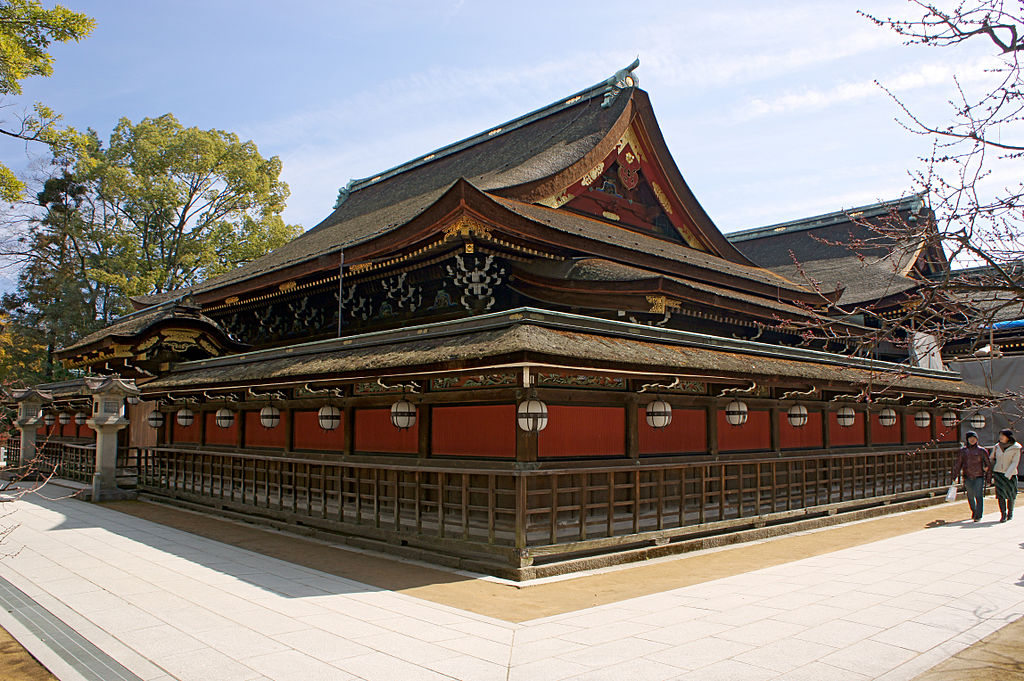
Kitano Tenmangu Shrine. The site where Nobunaga hosted the famous ‘Kitano Ōchakai’ (Great Kitano Tea Gathering). 663highland, CC BY-SA 3.0
The Kitano Ōchakai was attended by people from all walks of life, including samurai, court nobles, merchants, and monks, regardless of social status. Nobunaga did not set up his own tea room but allowed all participants to freely prepare tea. This was a groundbreaking initiative for a time when the class system was strict.
According to “Shinchō-kōki,” a chronicle of Nobunaga’s life, more than 800 tea rooms were set up at the venue, and the event was grandly held over ten days. It is said that Nobunaga himself prepared and served tea, and also visited other participants’ tea rooms to enjoy their tea.
The true purpose of this tea gathering was to showcase Nobunaga’s cultural refinement while creating a space for interaction that transcended social status. Through the tea ceremony, Nobunaga demonstrated his tolerance and progressive spirit, aiming to win the hearts of the people of Kyoto, where he had newly become the ruler.
The Tea Ceremony as Cultural Policy
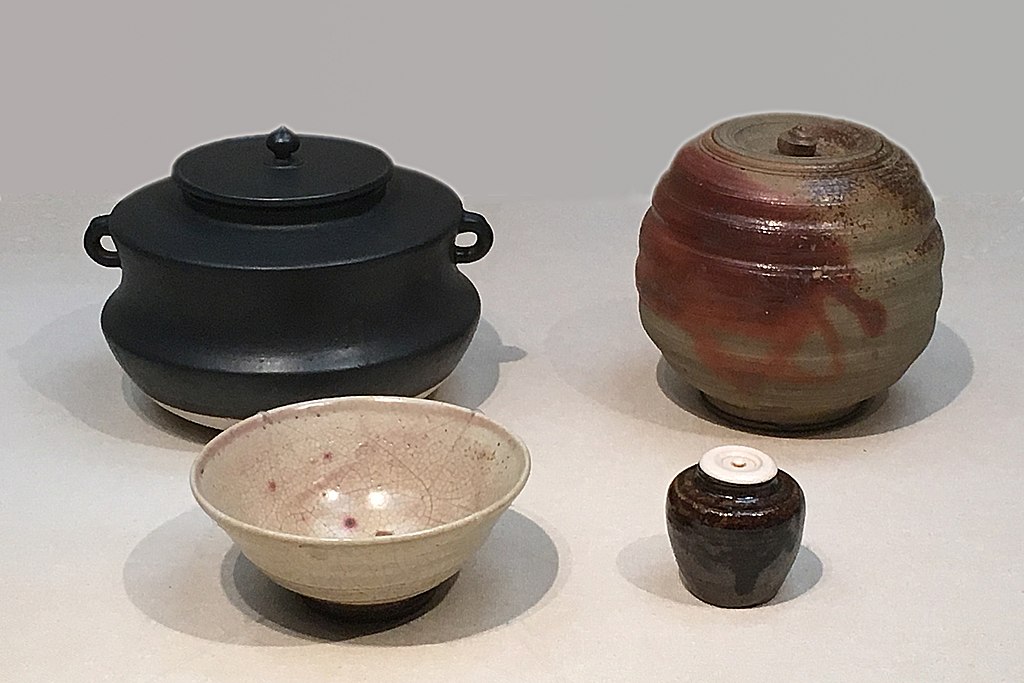
Various tea ceremony utensils. Nobunaga particularly valued Raku ware tea bowls, elevating the value of tea utensils. The photo shows a Seto-Karatsu tea bowl (Seto, Kato Shundai, late Edo period), tea caddy “Sanin” (Toyama, Edo period), black-shaft kettle (Seto, Takashima Tokumaru (2nd generation), Taisho period), and Mogake Zuito water jar (Tokoname, Sanko (1st generation/Matsushita Tsunezo), late Edo period)
Nobunaga utilized the tea ceremony not merely as a hobby but as part of his policy. Through the tea ceremony, he aimed to promote culture and stimulate the economy.
First, Nobunaga increased the value of tea utensils. While tea utensils from China and the Korean Peninsula were already expensive at the time, Nobunaga prized them even more. He particularly favored Chōjirō, the creator of Raku ware tea bowls, famously bestowing upon his works the title of “Meibutsu” (famous objects).
This further increased the value of tea utensils, creating new economic value in the world of tea ceremony. Moreover, Nobunaga protected tea masters and encouraged their activities. This demonstrated his attitude of valuing cultural figures while also serving to gather information and form connections through the tea ceremony.
Furthermore, Nobunaga put effort into tea production. He particularly encouraged the production of Uji tea and worked to improve its quality. This policy not only increased tea production but also contributed to elevating the overall tea culture of Japan.
Diplomacy Through Tea Ceremony
Nobunaga also utilized the tea ceremony as a diplomatic tool. It played a particularly important role in his interactions with Christian missionaries.
In 1569, when Nobunaga met with the Portuguese missionary Luis Frois, he held a tea ceremony. According to Frois’s records, Nobunaga prepared and served tea himself, introducing Japanese culture to the missionary.
This was more than mere hospitality. Through the uniquely Japanese culture of tea ceremony, Nobunaga sought to establish an equal relationship with the West. At the same time, he likely aimed to obtain Western goods and information through the missionaries.
The Honnō-ji Incident and Tea Utensils
On June 2, 1582, Nobunaga met his end at Honnō-ji temple due to the rebellion of Akechi Mitsuhide. Even in this final moment, it is said that he could not let go of his attachment to his tea utensils.
According to “Shinchō-kōki,” when Honnō-ji was set on fire, Nobunaga first tried to protect his precious tea utensils. In particular, it describes him attempting to protect his beloved tea caddy called “Katatsuki.”
This behavior might seem incomprehensible at first glance. However, for Nobunaga, tea utensils held meaning beyond mere tools. They symbolized his cultural side and were also symbols of his political power.
Nobunaga’s concern for his tea utensils even in his final moments speaks to his deep attachment to the tea ceremony and the strength of his commitment to cultural policy.
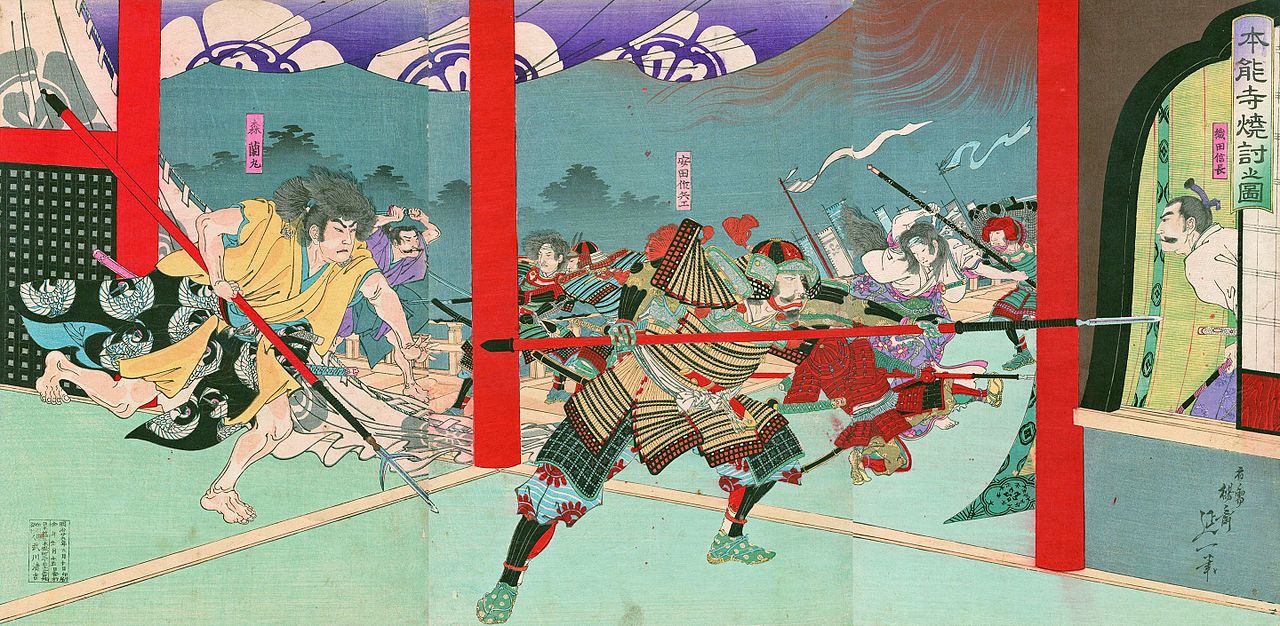
A Meiji-era print depicting the Honnō-ji Incident. It shows Nobunaga meeting his end at Honnō-ji temple. According to legend, even at this time, Nobunaga refused to let go of his beloved tea utensils. This print symbolically expresses the duality of Nobunaga as both a warlord and a man of culture who loved the tea ceremony. By Nobukazu Yōsai
The Lasting Influence of Nobunaga’s Tea Ceremony
Oda Nobunaga’s engagement with the tea ceremony had a significant impact on subsequent Japanese culture.
First, Nobunaga’s style of tea gatherings brought a new perspective to the world of tea ceremony. Tea gatherings as a place for interaction that transcended social status led to the development of the “tea room culture” later known as “Chonin no Sansai” (urban retreat).
Moreover, Nobunaga’s cultural policy elevated the tea ceremony beyond mere hobby to something with social and economic value. As a result, the tea ceremony became established as a core part of samurai culture and played a major role in shaping subsequent Japanese culture.
Furthermore, Nobunaga’s attitude towards the tea ceremony was inherited by his successors. Both Toyotomi Hideyoshi and Tokugawa Ieyasu were tea enthusiasts and developed the culture of tea ceremony in their own ways. Hideyoshi’s “Kitano Ōchakai” is particularly known as an emulation of Nobunaga’s tea gathering.
Conclusion
Oda Nobunaga’s tea gatherings and cultural policy vividly reflected his multifaceted character. The fusion of his innovativeness as a military leader and his refinement as a man of culture indicated a new direction for Japanese culture in the turbulent Sengoku period.
Nobunaga’s approach of promoting interaction that transcended social status through the tea ceremony and aiming for cultural and economic development was not that of a mere enthusiast. It was the approach of a visionary leader who understood the power of culture and utilized it in politics.
While Nobunaga sought unification through military force under the banner of “Tenka Fubu,” the cultural aspect he demonstrated became the foundation for later Japanese culture. Oda Nobunaga’s tea gatherings were significant events that sowed the seeds of peace and culture in the world of war.
